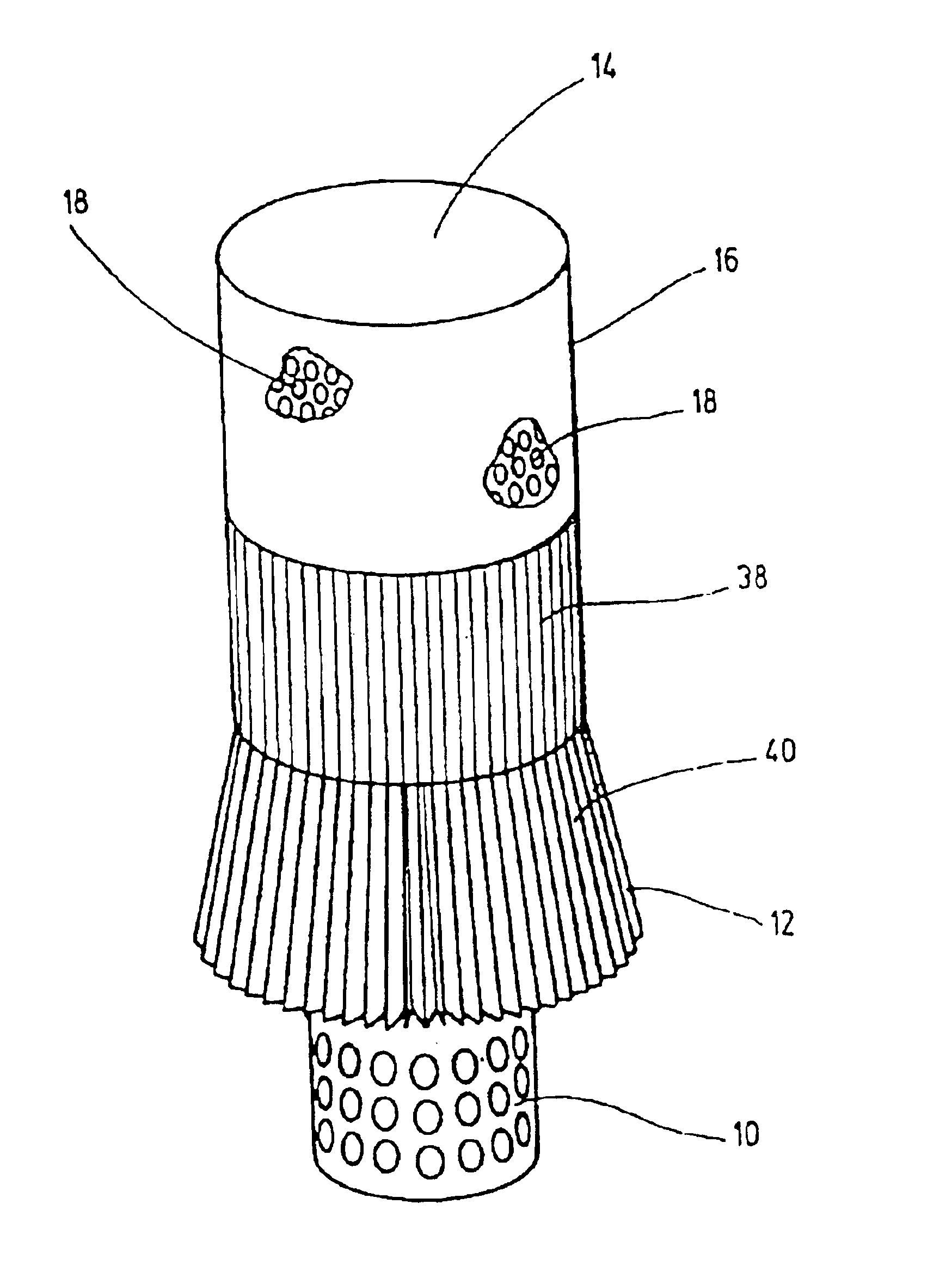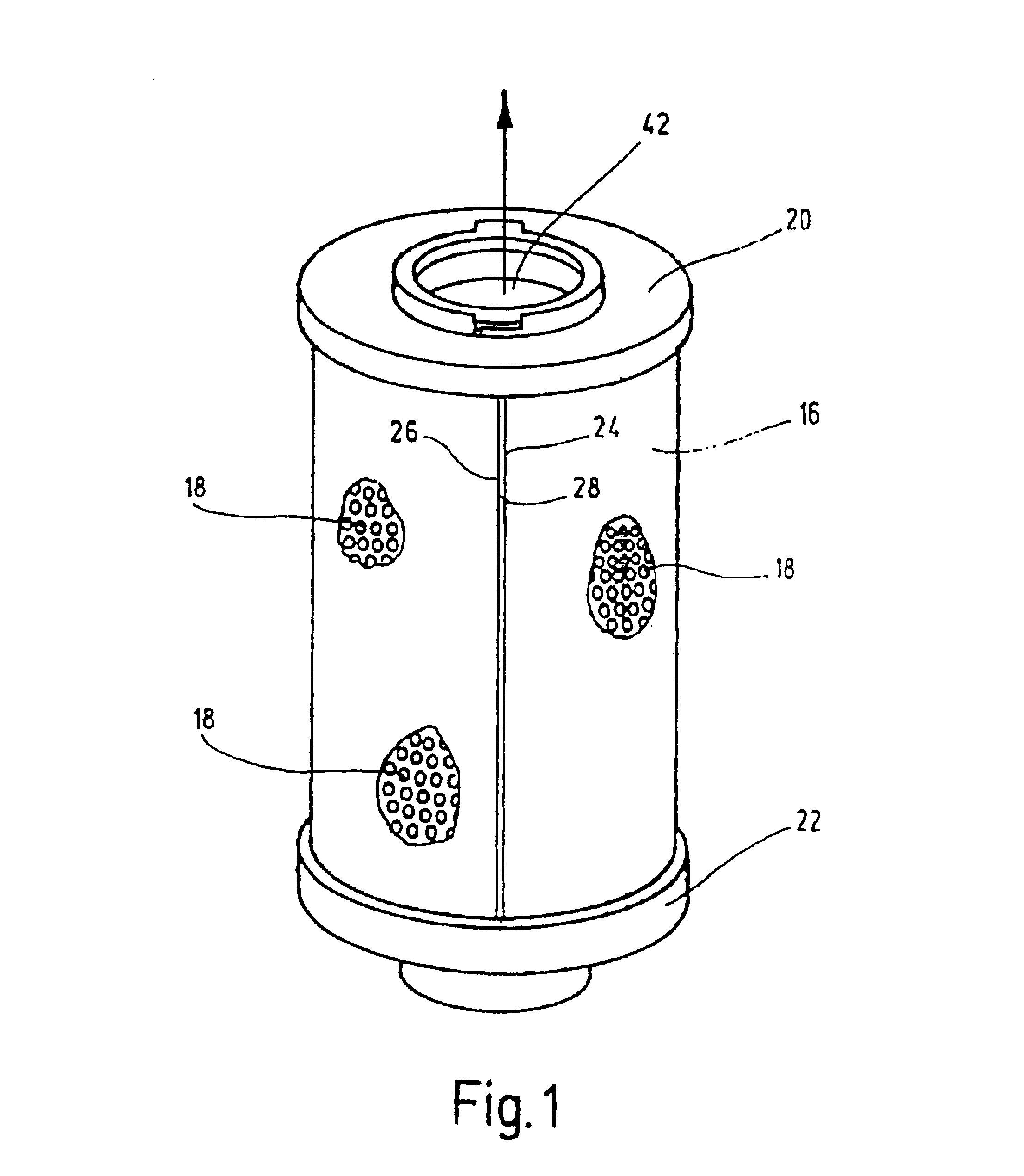Method of assembling plastic filter element with plastic casing
a filter element and plastic casing technology, applied in metal-working devices, electrical devices, domestic applications, etc., can solve the problems of inability to maintain such filter elements, cost-effective manufacture of known filter elements, and inability to manufacture such filter elements, so as to achieve economic and non-sensitive effects
- Summary
- Abstract
- Description
- Claims
- Application Information
AI Technical Summary
Benefits of technology
Problems solved by technology
Method used
Image
Examples
Embodiment Construction
The filter element of FIG. 1 comprises a fluid-permeable supporting pipe 10 (cf. FIG. 5) surrounded by a mat filter 12, which in turn is enclosed by a filter casing 16 with openings 18 delimiting a filter chamber 14. The filter element has end caps 20,22 (cf. FIG. 1).
Supporting pipe 10 is formed of a cylindrical pipe segment and has circular openings for passage of the fluid. The longitudinal ends of supporting pipe 10 are joined together by means of a welding seam, not shown in greater detail.
Supporting pipe 10 is open at the two frontal or axial ends. Filter casing 16 is formed of a plastic, especially of a polyamide or polyethylene compound, with good heat-adhesion properties and / or a good capacity for processing by ultrasonic welding. The plastic filter casing is first formed as a flat blank (not shown). The two ends 24, 26 of the blank are bent around toward one another, and are joined together securely with one another by a sealing seam 28 produced by the aforementioned method...
PUM
| Property | Measurement | Unit |
|---|---|---|
| Diameter | aaaaa | aaaaa |
| Area | aaaaa | aaaaa |
Abstract
Description
Claims
Application Information
 Login to View More
Login to View More - R&D
- Intellectual Property
- Life Sciences
- Materials
- Tech Scout
- Unparalleled Data Quality
- Higher Quality Content
- 60% Fewer Hallucinations
Browse by: Latest US Patents, China's latest patents, Technical Efficacy Thesaurus, Application Domain, Technology Topic, Popular Technical Reports.
© 2025 PatSnap. All rights reserved.Legal|Privacy policy|Modern Slavery Act Transparency Statement|Sitemap|About US| Contact US: help@patsnap.com



